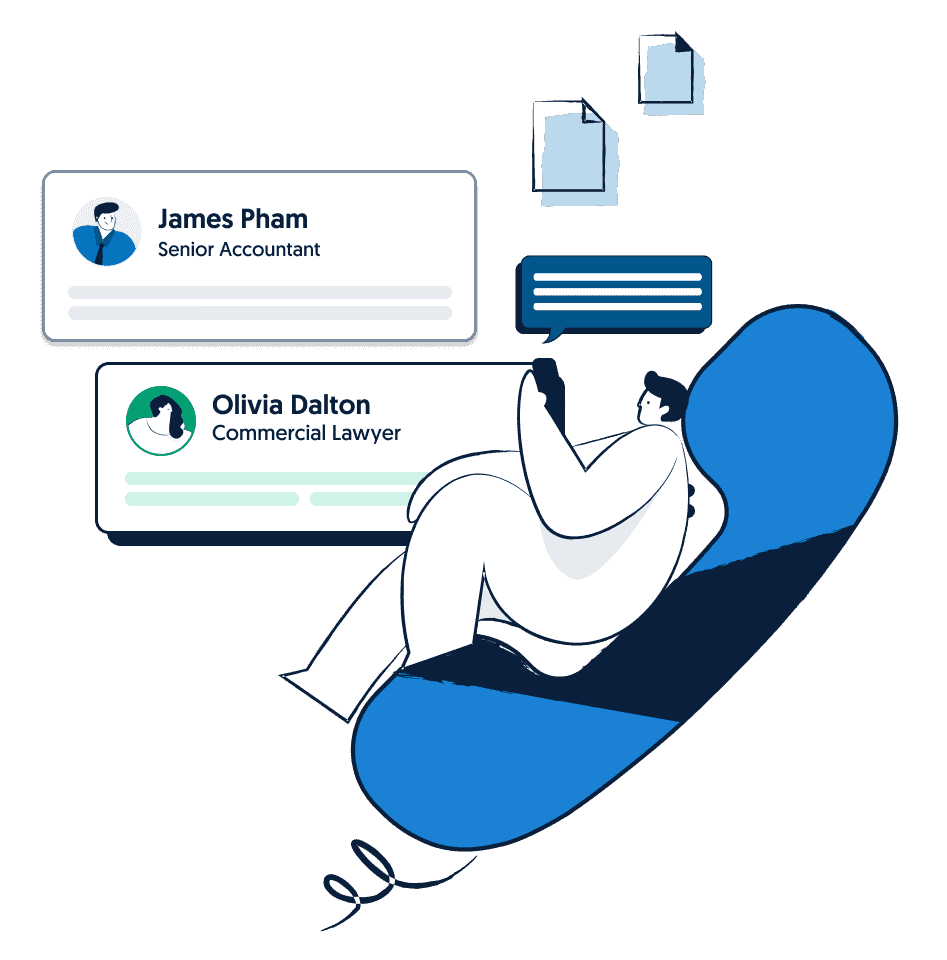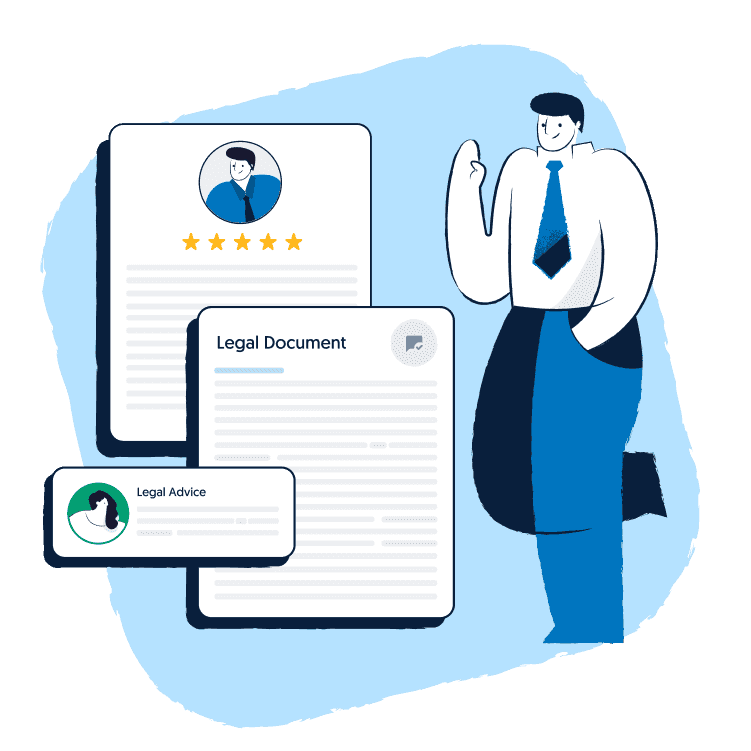When it comes to managing tax obligations and cash flow, asset depreciation is a crucial concept for Australian businesses. However, understanding how asset depreciation works can be challenging, with various rules, methods, and thresholds to consider.
Many business owners struggle to grasp how to claim depreciation correctly, which assets qualify, and how this affects their taxable income.
We are here to help! This guide will cover what asset depreciation means in the Australian tax context, why it matters for small businesses, the common types of depreciating assets, the depreciation methods available, and how to claim depreciation on your tax return.
By the end, you will have a clear understanding of how to effectively manage asset depreciation for tax purposes in Australia.
Table of Contents
What is asset depreciation in Australia?
In Australia, asset depreciation refers to the process of spreading the cost of a business asset over its effective life for tax deduction purposes. Essentially, instead of claiming the full cost of an asset in the year you’ve purchased it, you deduct a portion of the asset’s value each year. This reflects its decline in value over time due to wear and tear, obsolescence, or usage. This decline in value is known as depreciation.
The Australian Taxation Office (ATO) regulates how businesses claim depreciation. The ATO sets rules on which assets qualify, how to calculate depreciation, and the methods permitted.
It is important to distinguish depreciation from capital loss or asset disposal.
- Depreciation relates to the ongoing decline in value during use
- Capital loss or gain arises when an asset is sold or disposed of
Depreciating assets must have a limited effective life and be used to produce assessable income in the business. Examples include machinery, vehicles, computers, and office furniture. On the other hand, land and trading stock do not depreciate in value.
Why asset depreciation matters for small businesses
Depreciation is a valuable tax deduction that reduces your taxable income, so you pay less in annual tax. Small businesses can significantly improve cash flow by deferring tax payments and freeing up funds for reinvestment.
For example, if you purchase a laptop for your business costing $5,000, you cannot claim the entire $5,000 as a deduction in the year of purchase (unless it qualifies for instant asset write-off). Instead, you spread the deduction over the laptop’s useful life, say three years, claiming approximately $1,667 per year. This matches the expense with the period the asset is used, providing a fairer reflection of business costs.
Depreciation also helps plan and budget for assets so you can forecast expenses and manage long-term savings. By understanding depreciation, you can make informed decisions about asset purchases and replacements.
Common types of depreciating assets
Small business asset depreciation can apply to a range of assets. These include:
- Vehicles used for business purposes
- Equipment and machinery
- Technology such as computers, tablets, and phones
- Tools and specialised instruments
- Office furniture and fittings
To qualify for depreciation, you must use these assets primarily for the business and not for personal endeavours. If you use an asset partly for business and partly for private purposes, you can only claim the business-use portion.
In order to claim asset-related deductions, you must keep detailed records. This includes purchase invoices, receipts, and documentation showing the asset’s use in the business. Good record-keeping supports your claims and is required by the ATO in case of audits.
Depreciation methods in Australia: Which one should you choose?
The ATO allows two main methods for calculating depreciation: the diminishing value method and the prime cost method. Let’s take a closer look at both.
Diminishing value method
This method assumes that the asset loses more value in its earlier years of life. You calculate the deduction as a percentage of the asset’s remaining value each year, resulting in higher deductions initially that decrease over time.
Formula: Base value × (days held ÷ 365) × (200% ÷ asset’s effective life)
Example: An asset costing $80,000 with an effective life of 5 years:
First-year deduction = $80,000 × (365/365) × (200% ÷ 5) = $80,000 × 40% = $32,000
Prime cost method (straight-line)
This method spreads the cost evenly over the asset’s effective life, resulting in equal deductions each year.
Formula: Asset’s cost × (days held ÷ 365) × (100% ÷ asset’s effective life)
Example: Same $80,000 asset over 5 years:
Annual deduction = $80,000 × (365/365) × (100% ÷ 5) = $16,000 per year
Which method to choose?
- Use the diminishing value method if you expect the asset to lose value quickly or become obsolete sooner, benefiting from larger upfront deductions.
- Use the prime cost method for assets with a consistent usage and value decline over time.
Low-value pooling
Assets costing less than $1,000 can be grouped into a low-value pool and depreciated collectively at a diminishing value rate of 37.5% per year. This simplifies record-keeping and depreciation calculations for small-value items.
Instant asset write-off vs depreciation: What’s the difference?
The instant asset write-off in Australia allows eligible small businesses to claim an immediate deduction for the full cost of an asset in the year it is first used or installed rather than depreciating it over time. This applies to assets below a certain cost threshold and subject to turnover limits.
For example, for the 2023–24 and 2024–25 income years, small businesses with an aggregated turnover under $10 million can immediately write off assets costing less than $20,000.
If an asset exceeds the instant write-off threshold or the business does not qualify, depreciation must be claimed over the asset’s effective life.
Note that the instant asset write-off threshold has changed over the years, so it is important to check current ATO limits before claiming.
How to claim depreciation on your tax return
Claiming depreciation correctly ensures you maximise your tax deductions while staying compliant with ATO rules. Follow these steps to get it right.
1. Keep proper records and tax invoices
Collect and store all purchase documents for your assets, including tax invoices, receipts, and contracts. Remember to record the purchase date, cost, and any additional expenses, such as installation, freight, or initial repairs, as these form part of the asset’s cost base for depreciation.
Additionally, remember to maintain records showing how your business uses the asset, especially if it’s partly for private use, so that you can apportion your claim correctly.
To simplify record-keeping, consider using digital or physical filing systems so you can easily provide them to the ATO in case of an audit.
2. Identify which assets qualify for depreciation
First, check the assets that your business owns. Make sure these have a limited effective life and are used to generate assessable income in your business. Assets such as vehicles, equipment, technology, tools, and office furniture typically qualify for this deduction.
If you use assets partly for private purposes, you should only claim depreciation on the business-use percentage.
3. Choose the correct depreciation method
The ATO allows two main methods to calculate depreciation:
- Prime cost (straight-line) method: Spreads the cost evenly over the asset’s effective life, providing consistent deductions each year.
- Diminishing value method: Accelerates deductions, allowing larger claims in the earlier years and smaller amounts later.
How to choose:
- Use the prime cost method if your asset’s value declines steadily or you want predictable deductions.
- Use the diminishing value method if the asset loses value quickly or becomes obsolete sooner.
You can find the asset’s effective life in the ATO’s published list or self-assess it if you have a reasonable basis.
4. Consider low-value pooling or instant asset write-off
- Assets costing less than $1,000 can be grouped into a low-value pool and depreciate the pool at a fixed rate (37.5% diminishing value).
- Suppose your business has a turnover under $10 million. In that case, you can deduct the full value of assets costing less than the current instant asset write-off threshold (e.g., $20,000 for 2024/25) immediately instead of depreciating them over time.
5. Use an asset depreciation schedule if necessary
If your business has multiple assets or complex asset structures, a depreciation schedule prepared by a qualified quantity surveyor or accountant can simplify claims. This schedule details each asset’s depreciation deductions over its effective life and can be used year after year to ensure accuracy and compliance.
6. Enter depreciation details in your tax return
When lodging your tax return, use the Depreciation and Capital Allowance tool available in the ATO portal. Add each asset with details such as cost, purchase date, effective life, depreciation method, and business-use percentage. The tool calculates your deductible amount and automatically populates the relevant sections of your tax return.
If lodging manually, include depreciation deductions under capital allowances in your business or rental property schedules.
7. Review and adjust for asset changes
If you sell, dispose of, or stop using an asset in your business, you must adjust your depreciation claims accordingly. To do so, report any balancing adjustments (gain or loss) on disposal in your tax return. Stop claiming depreciation once the asset reaches the end of its effective life.
8. Seek professional advice if unsure
Depreciation rules in Australia can be complex, especially with multiple assets or mixed-use items. Consider consulting a tax accountant or advisor to prepare depreciation schedules and ensure you claim the maximum allowable deductions.
Common mistakes when claiming depreciation (and how to avoid them)
Navigating asset depreciation can be challenging, but there are several common mistakes that you can easily avoid. By recognising the following mistakes and implementing practical solutions, you can mitigate costly errors, maximise your depreciation claims, and remain compliant with Australian tax laws.
Claiming depreciation on assets used mainly for personal purposes
One of the most common errors small business owners make is claiming depreciation on assets that are primarily used for personal purposes. For example, if you purchase a laptop that you use 60% for business and 40% for personal activities, you can only claim depreciation on the 60% business-use portion. Claiming the full depreciation amount would be incorrect and could trigger an ATO audit.
Solution: Keep detailed records of how and when you use each asset. If an asset has mixed use, calculate your depreciation claim based only on the percentage of business use.
For instance, if your $5,000 laptop is used 60% for work, your annual depreciation claim should reflect $3,000 of the asset’s value, spread over its effective life. Using a logbook or usage diary can help substantiate your claims.
Using the wrong depreciation method
Choosing the incorrect depreciation method can result in under- or overclaiming deductions. For example, some businesses apply the prime cost method to assets that rapidly lose value, such as technology or vehicles, when the diminishing value method would provide larger upfront deductions and better cash flow benefits.
Let’s say a business buys a $20,000 piece of equipment with a 5-year effective life. Using the prime cost method, the deduction is $4,000 per year. Using the diminishing value method, the first-year deduction could be $8,000, which better matches the asset’s rapid depreciation.
Solution: Assess your asset’s usage and expected value decline to select the appropriate method. The ATO provides guidance on effective lives and depreciation methods.
Claiming both instant asset write-off and depreciation for the same asset
Some business owners mistakenly claim an instant asset write-off for the full cost of an asset and then also claim depreciation deductions on the same asset over subsequent years. This double-dipping is not allowed and can lead to penalties.
Solution: Decide upfront whether to claim the instant asset write-off or depreciate the asset over time. Keep clear records of your choice and ensure your tax return reflects it accurately.
Failing to keep receipts or proper records
Failing to keep purchase receipts, tax invoices, or documentation showing business use is a common and costly mistake. Without proper records, the ATO may disallow your depreciation claims or impose penalties during an audit.
Solution: Maintain organised records for every asset on which you claim depreciation. This includes purchase invoices, proof of payment, and documentation of business use. Use digital storage solutions or accounting software to keep these records safe and easily accessible.
When to update or stop depreciating an asset
You must adjust your depreciation claims if:
- You dispose of or sell the asset – you may need to report a balancing adjustment.
- The asset is no longer used in the business – stop claiming depreciation from that point.
- The asset reaches the end of its effective life – no further deductions can be claimed.
Any gain or loss on disposal may affect your taxable income and should be reported accordingly.
FAQ
What is the difference between diminishing value and prime cost methods?
The diminishing value method gives larger deductions early on and smaller ones later, while the prime cost method spreads deductions evenly over the asset’s life.
Can I claim instant asset write-off and depreciation together?
No, you must choose either the instant asset write-off or depreciate the asset over time, but not both for the same asset.
What is a depreciation schedule?
A depreciation schedule is a detailed report outlining the depreciation deductions for each asset, helping you claim the correct amounts on your tax return.
Making asset depreciation work for you
Understanding asset depreciation is vital for managing your business’s tax obligations efficiently. By knowing how to apply depreciation methods, when to use instant asset write-offs, and how to keep proper records, you can optimise your tax deductions and improve cash flow.
Lawpath can help you ensure business tax compliance at every step of the way, including business tax deductions. Reach out today for tailored advice!











